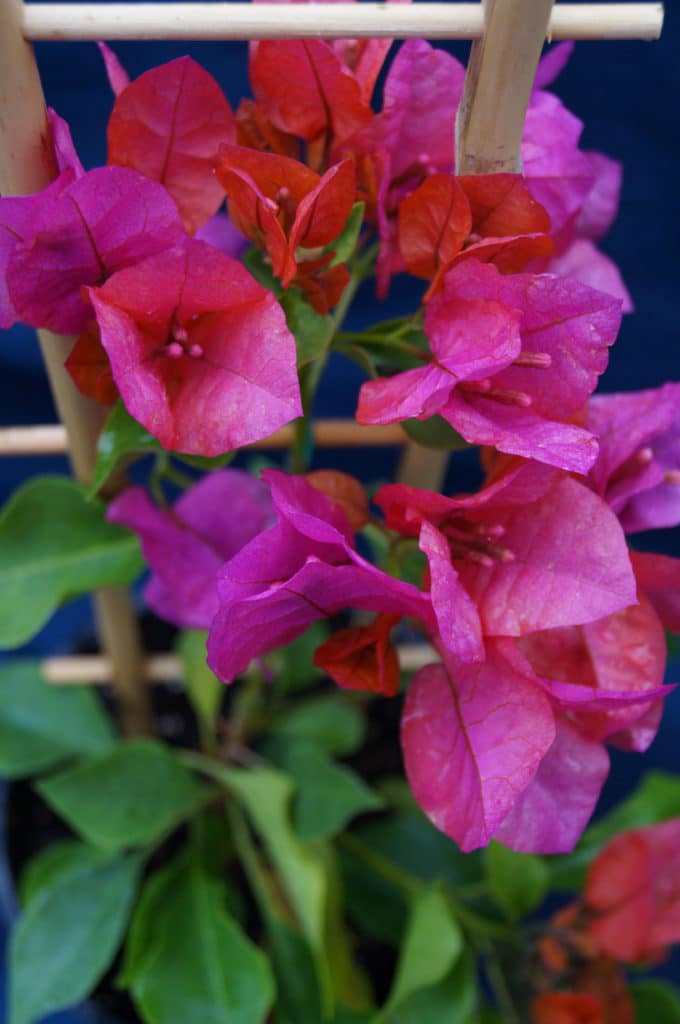
The bountiful and beautiful bougainvillea plant – native to the coast of Brazil – has spread itself around the world, mutating and cross-breeding until now there is a great deal of confusion among horticulturalists as to just how many bougainvillea cultivars or varieties exist, and what their names are.
The first person to document the Bougainvillea was a French naturalist, Dr Philibert Commerson, who came across it in Rio de Janeiro. He named the splendid plant for his friend and fellow traveller, Admiral Louis-Antoine de Bougainville, who was sailing round the world on a voyage of discovery on behalf of the French Government aboard a ship called La Boudeuse. It wasn’t only horticultural fame that accrued to the admiral in Rio. He also went on to discover French Polynesia and gave his name to Bougainville Reef, Australia and Bougainville Island, Papua New Guinea.
Being hardy and attractive, it didn’t take long for bougainvilleas to be imported to other tropical and warm countries, where they are a common sight today from Spain to China, and Hawaii to Australia.
The bougainvillea flower (actually what we perceive as the colourful papery flower is in fact the bract that encase the rather unexciting real flower) is the official flower of three cities in California, USA; four cities in Guangdong Province, China; a city and a province in the Philippines, and a city in Okinawa, Japan. The islands of Grenada and Guam also boast the bougainvillea as their official flower.
To return to the history of the bougainvillea, it was listed in the botanically renowned “Genera Plantarium” by A.L. de Jusseau, published in 1789, as “Buginvillea”. The incorrect spelling remained entrenched until it was corrected in the Index Kewensis (The Royal Botanic Gardens of Kew’s reference work for flowering plants) in the 1930s.
Two species of bougainvillea – B. spectabilis and B. glabra – became the first to arrive in Europe in the 19th Century, and it was not long before they were being carried abroad to the colonies and Australia. Not long after these species became familiar in Europe, there was a great stir in the ranks of bougainvillea fanciers. A Mrs R.V. Butt claimed to have found a unique variety of crimson red bougainvillea in her garden in Cartagena, Spain. This was excitedly named B. buttiana in the lady’s honour, but later it was discovered to be a natural hybrid of the B.glabra and B.peruviana species, native to Peru.
By the 1930s it had become apparent that bougainvillea were very good at producing spontaneous natural hybrids, the species crossing themselves and producing the 300-odd varieties we have today, with their wide array of gorgeous colours. Botanists, however, have traced back most of today’s rich variety of bougainvillea back to only three of the original eighteen South American species identified.
You don’t have to be a student of the history of the bougainvillea, or concern yourself about the confusion surrounding the genesis of modern-day hybrids, to appreciate the beauty of this hardy and vibrant plant which has managed to conquer the world.
